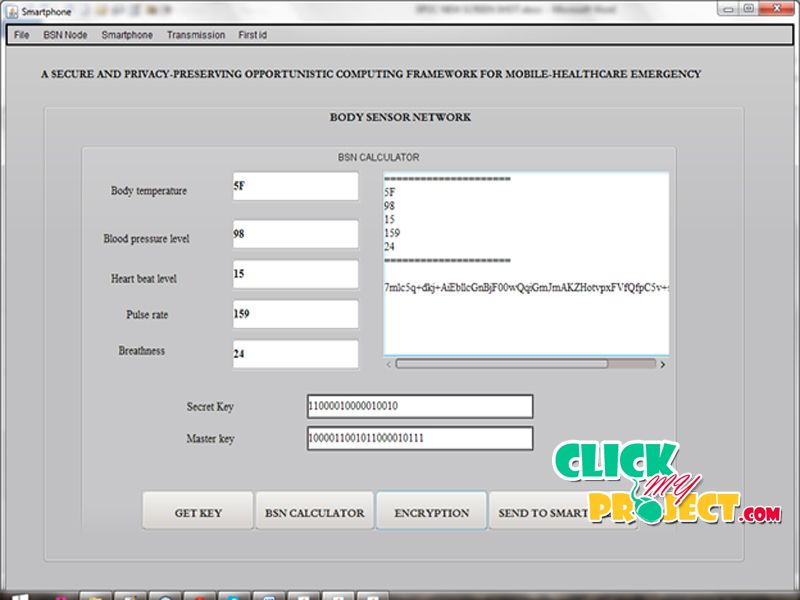SPOC: A SECURE AND PRIVACY-PRESERVING OPPORTUNISTIC COMPUTING FRAMEWORK FOR MOBILE-HEALTHCARE EMERGENCY
₹4,500.00
10000 in stock
SupportDescription
ABSTRACT
The pervasiveness of smart phones and the advance of wireless body sensor networks (BSNs), mobile Healthcare (m-Healthcare), which extends the operation of Healthcare provider into a pervasive environment for better health monitoring, has attracted considerable interest recently. However, the flourish of m-Healthcare still faces many challenges including information security and privacy preservation. In this paper, we propose a secure and privacy-preserving opportunistic computing framework, called SPOC, for m-Healthcare emergency. With SPOC, smart phone resources including computing power and energy can be opportunistically gathered to process the computing-intensive personal health information (PHI) during m-Healthcare emergency with minimal privacy disclosure. In specific, to leverage the PHI privacy disclosure and the high reliability of PHI process and transmission in m-Healthcare emergency, we introduce an efficient user-centric privacy access control in SPOC framework, which is based on an attribute-based access control and a new privacy-preserving scalar product computation (PPSPC) technique, and allows a medical user to decide who can participate in the opportunistic computing to assist in processing his overwhelming PHI data. Secure and privacy preserving opportunistic computing framework for m-Healthcare emergency. With SPOC, the resources available on other opportunistically contacted medical users’ smartphones can be gathered together to deal with the computing-intensive PHI process in emergency situation. Since the PHI will be disclosed during the process in opportunistic computing, to minimize the PHI privacy disclosure, SPOC introduces a user-centric two-phase privacy access control to only allow those medical users who have similar symptoms to participate in opportunistic computing. Detailed security analysis shows that the proposed SPOC framework can efficiently achieve user-centric privacy access control in m- Healthcare emergency.




